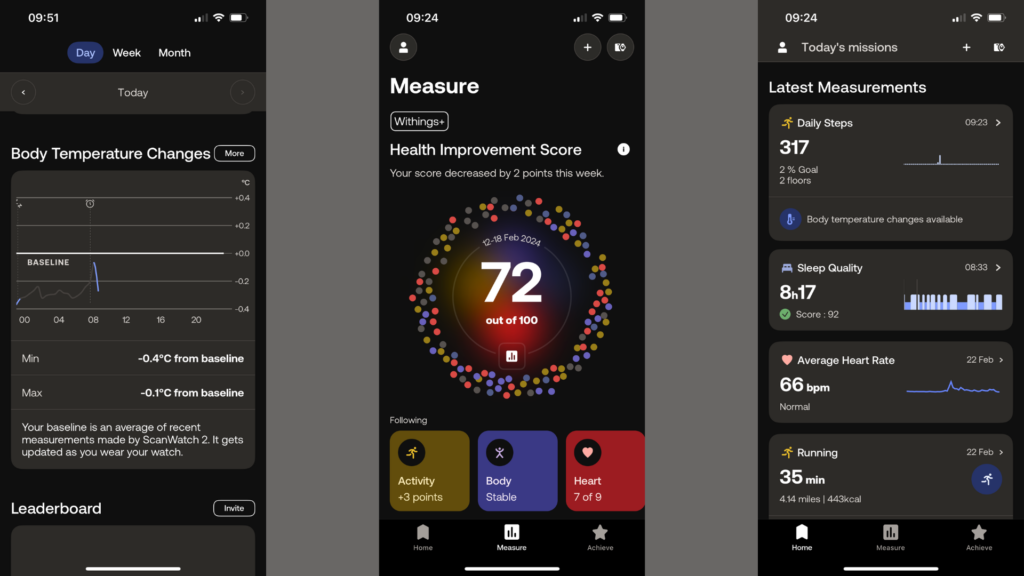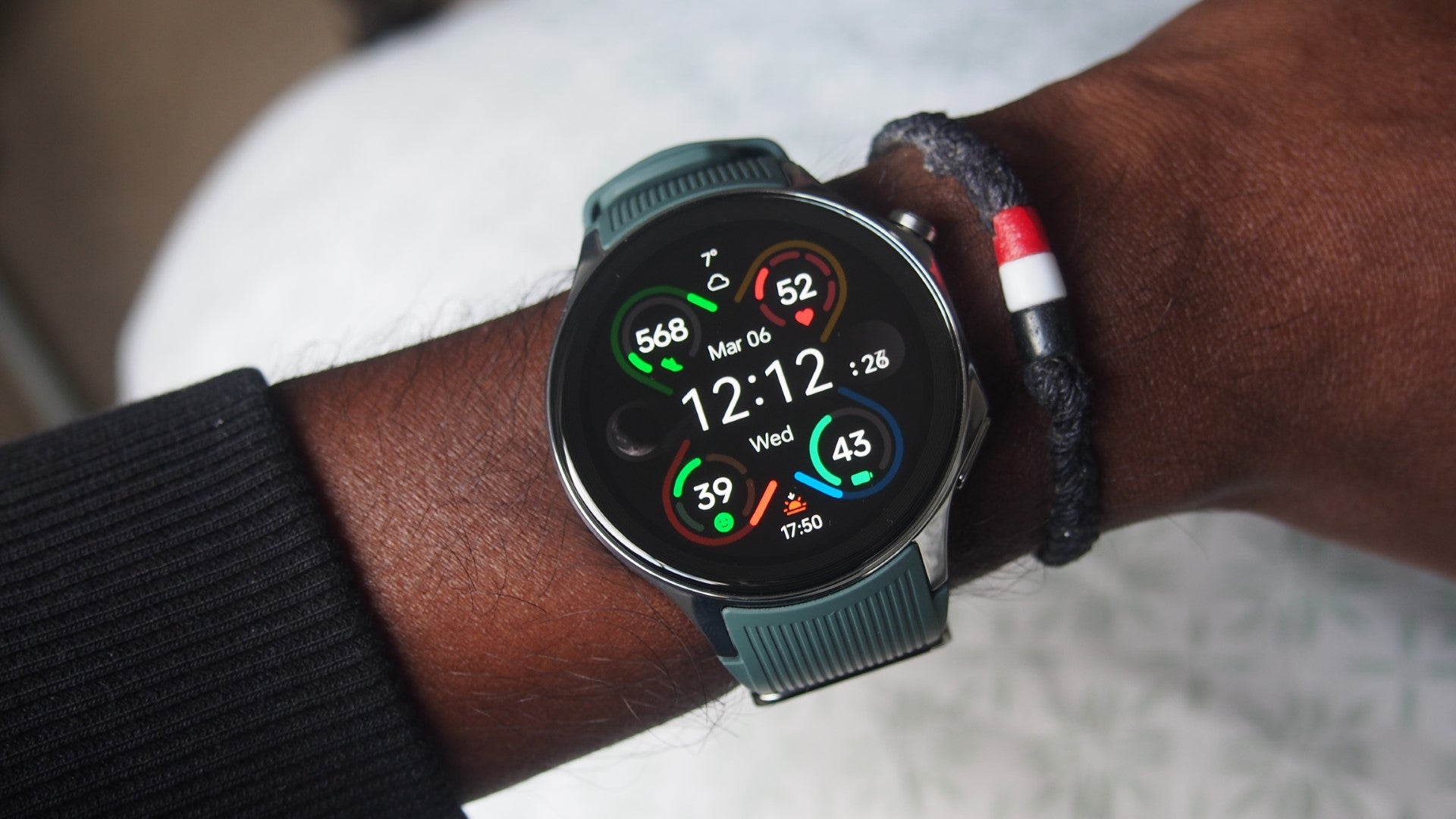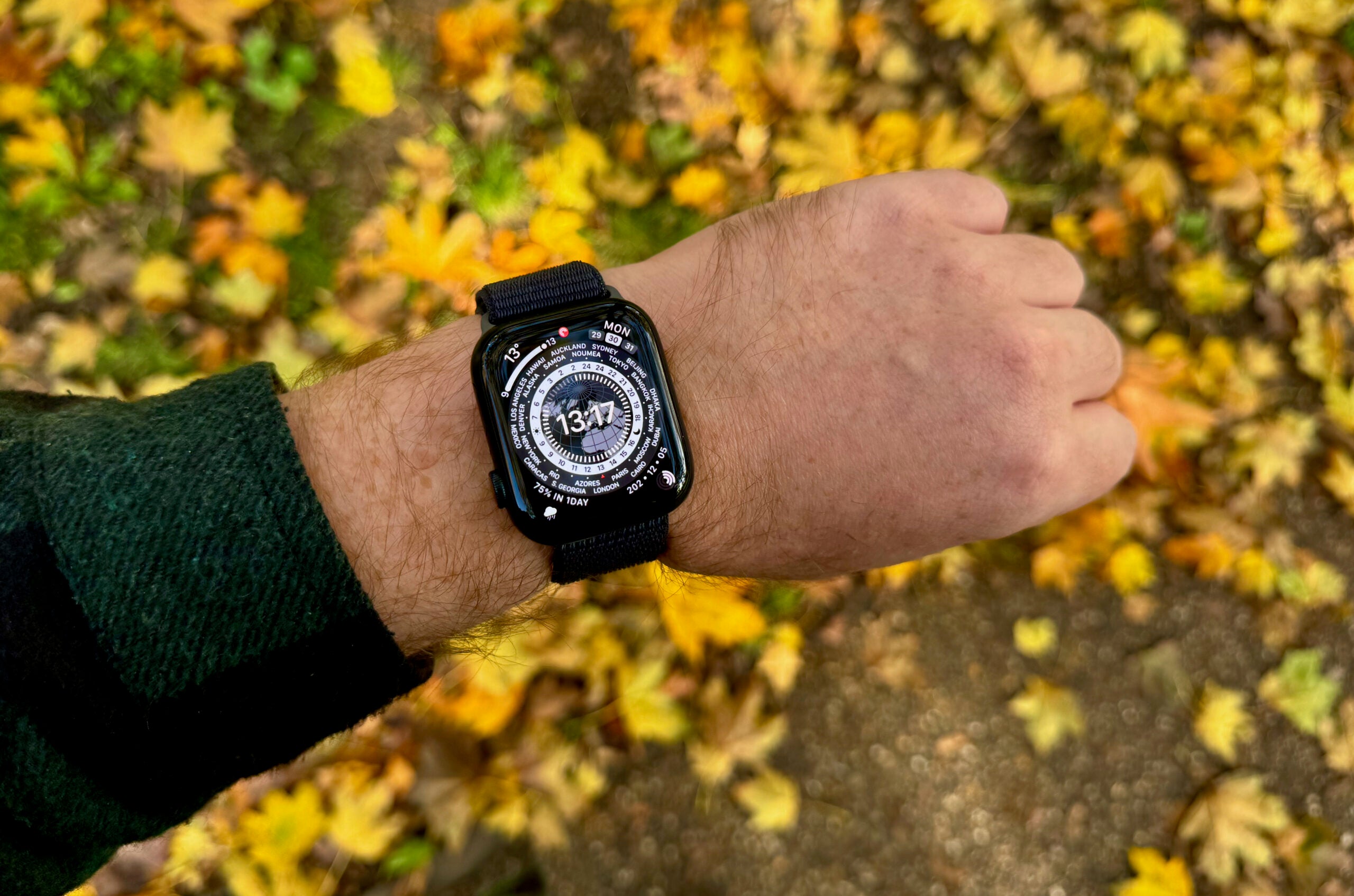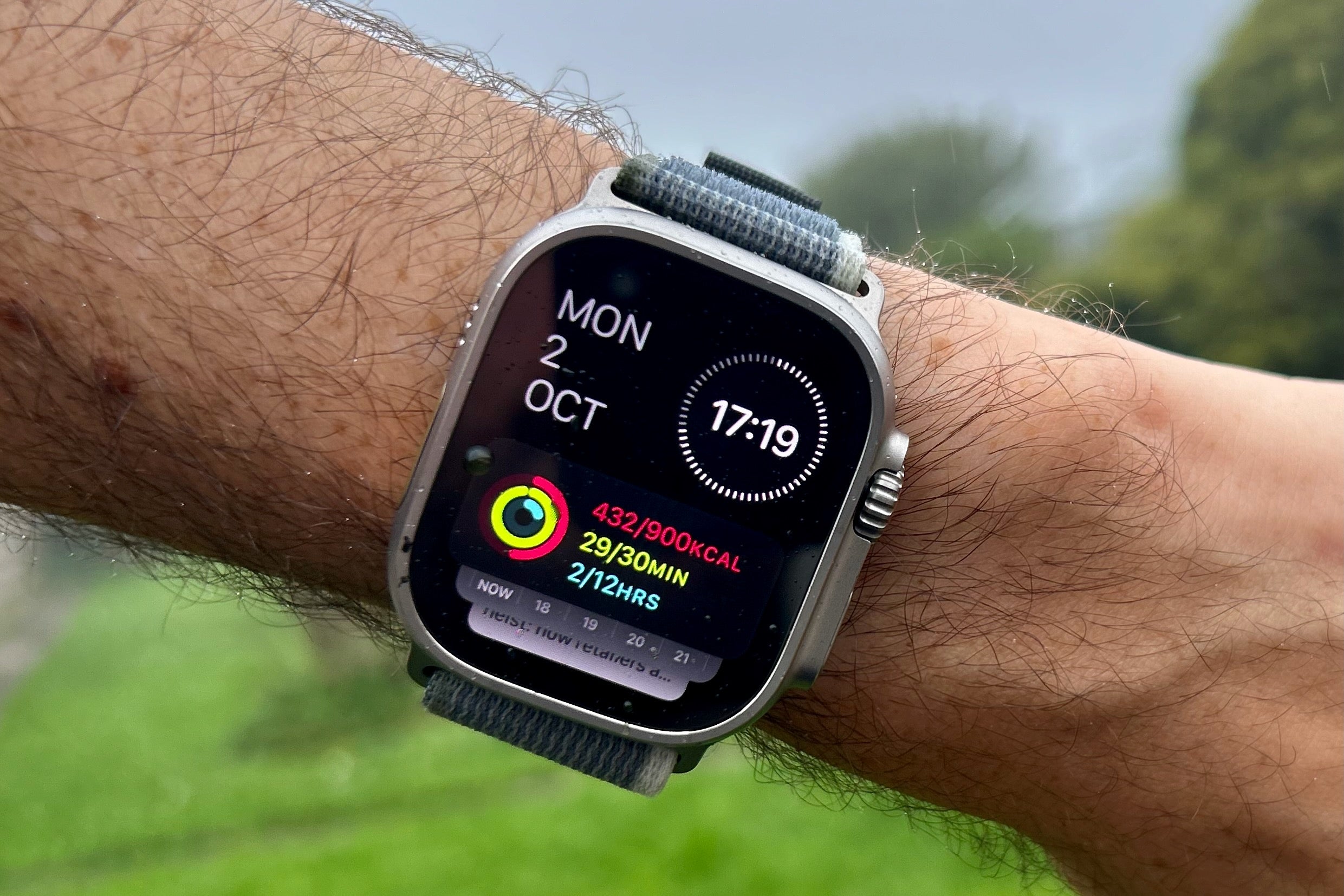Withings ScanWatch 2 Review
The best hybrid smartwatch just got better






Verdict
The Withings ScanWatch 2 is an attractive hybrid smartwatch that packs in a good mix of health and fitness smarts with some basic smartwatch ones, though you may find better all-round performance by spending a little more on a full fat smartwatch.
Pros
- Lovely design
- Performs well as a sleep tracker
- Useful temperature variation data
Cons
- Heart rate tracking accuracy during the day and exercise
- Small screen isn’t great for phone notifications
- Battery life with all monitoring features in use
Key Features
- Hybrid design:The ScanWatch 2 looks like a traditional timepiece, but works like a smartwatch
- Continuous temperature variation tracking:The big upgrade over the original Withings ScanWatch
- Waterproof up to 50 metres:Suitable for swimming tracking
Introduction
The Withings ScanWatch 2 is a smartwatch for people who want something more than a traditional timepiece, but without the digital aesthetic used by wearables from Apple and Samsung.
That’s exactly what you get from the middle member of the Withings hybrid smartwatch family, which costs less than an Apple Watch Series 9 and offers big health and wellness tracking features like ECG-based heart rate measurements and body temperature tracking, the notable big addition from the first Withings ScanWatch.
While it might lack a big colourful display, the ScanWatch 2 does promise to track your health and fitness while offering some smartwatch staples for less than the full-fat competition.
Design and screen
- Comes in two case options
- Nice collection of optional straps
- Waterproof up to 50 metres
The design remit of the ScanWatch 2 remains the same as the original ScanWatch (and all of Withings’ watches for that matter) to give you something that looks and feels like an analogue timepiece. As far as achieving that, Withings does a standout job.
You have your pick of 42mm or smaller 38mm case size options. I had the larger 42mm version to try out and while I do possess pretty skinny wrists, it certainly didn’t feel like a hulking watch to wear and it’s a very refined watch to accessorise with.
There’s more dial colour options for the 38mm version compared to the 42mm, with my silver case and black dial combination certainly being a more low-key and understated affair. All models feature stainless steel cases and designs that are 5ATM rated, making them safe to go swimming with up to 50-metres depth.

One of the biggest differences between the ScanWatch 2 and the cheaper ScanWatch Light lies with the screen protection. The ScanWatch 2 packs tougher sapphire glass compared to Gorilla Glass on the Light and I’m happy to say the screen has managed to fend off scratches so far. The other difference is that you’re getting an additional sub-display that’s dedicated to showing your daily step tracking progress.
That joins a 0.63-inch OLED display which you can wake up via the twisting watch crown or by enabling the raise to wake gesture support in the Withings companion app. That display can show off your health and wellness metrics, phone notifications and get you into menus for features like workout tracking.
On the strap front, the ScanWatch 2 comes paired up with a fluoroelastomer band with a pretty standard watch buckle that’s been comfortable to wear day and night, and during exercise. A simple sliding pin mechanism makes it easy to remove with Withings, offering a nice range of leather and full metal bands to help you dress the ScanWatch 2 for more formal occasions. Upgrades aside, and even with the more workout-friendly strap included in the box, the ScanWatch 2 is a great looker made with high grade materials and worth every of the price it costs.
Health and fitness tracking
- Continuous body temperature tracking
- Upgraded optical heart rate sensor
- Connected GPS support and automatic exercise recognition
The best way to look at the ScanWatch 2 is that it’s a fitness tracker and a serious health monitoring device, though you shouldn’t expect to find the same amount of tracked workouts available compared to something from the likes of Garmin or Apple..
Sensor-wise, there’s an accelerometer to handle step and sleep tracking and also offer some workout tracking. There’s an altimeter in tow to track elevation as well here.
Withings has upgraded the PPG sensor responsible for tracking metrics like heart rate, body temperature, blood oxygen levels and respiratory rate. Like the first ScanWatch, there’s an ECG sensor that lets you take on the spot heart rate measurements to check for signs associated with atrial fibrillation.

In terms of other health and general wellness features, the ScanWatch 2 offers guided breathing exercises as well as menstrual cycling tracking support both on the watch and inside the Withings app.
As a fitness tracker, I’ve been wearing it alongside a range of different wearables including the Garmin Forerunner 965 and the Oura Ring Gen 3 to compare core tracking stats. I found daily step counts were within 500-600 steps of the Oura and Garmin’s tracking and the floors climbed recorded were generally similar on most days with the Garmin. The watch will flash up inactivity alerts to remind you to move or stretch your legs, though that’s about as far as it goes on motivating you to keep moving.
When tracking exercise, there are profiles for a handful of activities that include running and swimming. If you’re heading outside and relying on the accelerometer-based tracking then it won’t be as accurate as the competition if you don’t have your phone to hand, relying on connected GPS. I actually found the accelerometer-based tracking not too off the ball on the tracking front when you keep the runs relatively short.
When you do use the connected GPS it performs better than a lot of other watches that rely on that method of boosting outdoor tracking accuracy. The automatic exercise recognition generally works well for things like walking, running and swimming, but can have the odd tendency to incorrectly detect an activity every now and then.
Sleep tracking is a strength for the ScanWatch 2 where it’s able to capture duration, sleep stages along with sleep interruptions and heart rate throughout the night. I found sleep duration and sleep stage breakdowns were similar to data captured by an Oura Ring Gen 3. I also found heart rate data during sleep was similar to the average heart rate data recorded by Oura and Garmin.
On the heart rate tracking front, I’ve found that during the day readings were typically 20 bpm higher than Garmin and Apple’s continuous tracking, which I’ve found very reliable for continuous heart rate monitoring. It wasn’t much better during exercise where max heart rate readings were typically 10 bpm higher than a chest strap monitor. Things are more reliable when you put the ECG heart rate monitoring to good use and I found that SpO2 readings were generally in line with a dedicated pulse oximeter. These two sensors are FDA certified. Ultimately though, if you care about tracking heart rate during the day, this isn’t a great performer on that front.

Then we get to the big new feature, which is continuous body temperature tracking. This upgrade can display temperature variations on the digital watch face and also show body temperature changes in the Activity section of the Withings app. It will also record temperature after a workout, which could be a useful insight to have when exercising in hotter environments. Because the ScanWatch 2 doesn’t display precise measurements it’s hard to get a sense how accurate it actually is.
The Oura Ring Gen 3 similarly tracks temperature variations but only at night, so it was tough to compare how well the two devices fared as Withings doesn’t break down temperature during sleep. I could see where temperature was raised after exercise at least, but this feature could potentially have value if you’re worried you might be coming down with something.
Software and smartwatch features
- Works with Withings Android and iOS app
- Withings+ paid subscription available
- Display notifications and set up alarms
The ScanWatch 2 works alongside a very busy Withings companion app, which is free to use and does additionally offer a Withings+ subscription element, which costs just under £10/$10 a month to get access to features like Health Improvement Scores, which aim to simplify your progress across activity, health and heart tracking with a single score. You can also access programs, workouts, articles and recipes. It does feel like a lot of these features should be part of the free section of the app.
With the watch’s digital display, bite sized bits of information are more easily read here. If you enable notifications, longer ones feel cramped and become a chore to read through. For information like on the spot measurements, checking your activity tracking progress and seeing the time and date, the screen is absolutely workable. That’s always going to be one of the big disadvantages opting for a hybrid smartwatch over full smartwatch.
Outside of displaying notifications the ScanWatch 2’s smartwatch support extends to letting you set up timers, alarms and access a stopwatch mode. Setting up an alarm is done through the app and sends a vibrating buzz to your wrist, which you can turn off or snooze via the watch crown. If you were hoping for big smartwatch features or more than there was on the original ScanWatch, that’s not the case here.
If you want to share your data, Withings does let you do that with Apple Health, Google Health Connect and Google Fit and it doesn’t take much effort to set those connections up.

Battery life
- Up to 30-days
- No fast charging support
- Uses charging cradle
Withings is sticking to the same battery life claims attached to the ScanWatch, so this should be a watch that can last up to 30-days off a single charge. I’d say getting that 30 days is possible as long as you’re not putting to use everything the ScanWatch 2 has to offer. If you decide to enable the more comprehensive sleep tracking support, use connected GPS and enable notifications, it’s definitely going to be less than that. I found using a combination of those features along with everything else the ScanWatch 2 has to offer resulted in a 10% battery drain per day, on average. That would actually work out closer to 10 days.
There’s no doubt that it can comfortably last a week and could go on for several, but if you care about notifications and having features like respiration rate tracking turned on, then it’s going to be less, but it’s still a longer stint than you can get with most traditional smartwatches.
When it’s time to charge, Withings adopts a similar black charging cradle to the one supplied with the ScanWatch Light. It securely clips to the watch case and crown to make sure it doesn’t budge and takes roughly two hours to go from 0-100%. Unfortunately, you don’t get any sort of fast charging to speed things up, though in general you’re going to charge it less frequently than most other smartwatches.
Latest deals
Should you buy it?
You want an attractive hybrid smartwatch:
The Withings ScanWatch 2’s greatest pull is that it looks great and doesn’t put its connected smarts firmly on show.
You want the best smartwatch for heart rate tracking:
While there are some things the ScanWatch 2 performs well at, heart rate monitoring isn’t one of them and if that’s something you care about then there are better performers out there.
Final Thoughts
Withings knows how to make really beautiful hybrid smartwatches and that’s never really been in doubt. The next step has been adding more useful features without compromising design and with the addition of temperature tracking, it’s managed to do that.
Unfortunately some aspects slightly miss the mark and the promised heart rate accuracy improvements just haven’t materialised. It might be time to re-think things on the display so that the smarter aspects of the ScanWatch series, like notifications and workout information, work better in future.
I’d say the Garmin Vivomove series offers better tracking performance in general, though it lacks the more attractive design quality you get with the ScanWatch 2. If you’re sold on a hybrid smartwatch that’s good for fitness tracking, sleep tracking and keeping tabs on your temperature, then those are the key reasons to go for it.
How we test
We thoroughly test every smartwatch we review. We use industry standard testing to compare features properly and we use the watch as our main device over the review period. We’ll always tell you what we find and we never, ever, accept money to review a product.
Worn as our main tracker during the testing period
Heart rate data compared against dedicated heart rate devices
FAQs
The main differences between the ScanWatch and ScanWatch 2 are the upgraded PPG sensor, along with the added temperature tracking, overnight HRV insights and the ability to access menstrual cycle tracking features directly from the watch.
The Withings ScanWatch 2 doesn’t have built-in GPS but does offer connected GPS, letting you pair the watch with your phone through the Withings app to use your phone’s GPS connection.








